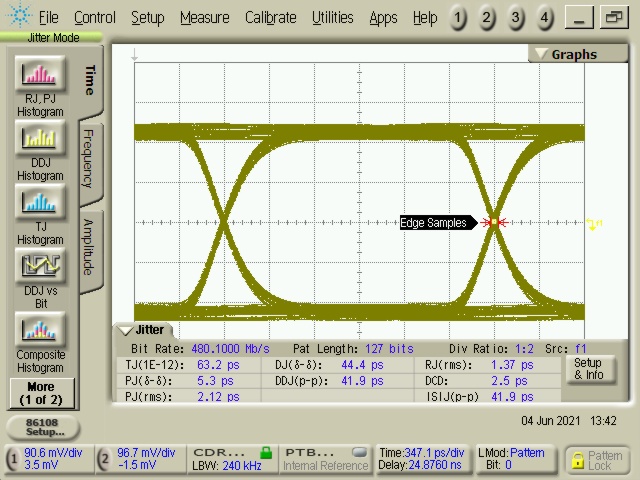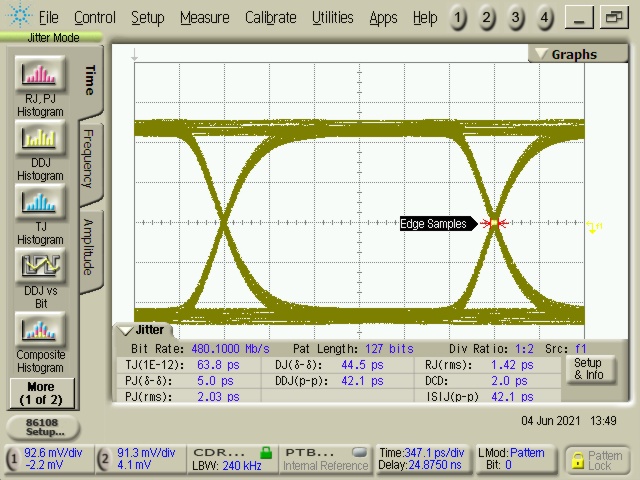JAJSP30A August 2022 – November 2022 TMUXHS221
PRODUCTION DATA
- 1 特長
- 2 アプリケーション
- 3 概要
- 4 Revision History
- 5 Pin Configuration and Functions
-
6 Specifications
- 6.1 Absolute Maximum Ratings
- 6.2 ESD Ratings
- 6.3 Recommended Operating Conditions
- 6.4 Thermal Information
- 6.5 Electrical Characteristics
- 6.6 High-Speed Performance Parameters
- 6.7 Switching Characteristics
- 6.8 Typical Characteristics – S-Parameters
- 6.9 Typical Characteristics – Eye Diagrams
- 16
- 6.10 Typical Characteristics – RON
- 7 Detailed Description
- 8 Application and Implementation
- 9 Power Supply Recommendations
- 10Layout
- 11Device and Documentation Support
- 12Mechanical, Packaging, and Orderable Information
6.9 Typical Characteristics – Eye Diagrams
Figure 6-3 and Figure 6-4 show a side by side comparison of 480 Mbps USB 2.0 HS signals through calibration traces (without the device) and a typical TMUXHS221 channel. Attenuation of the vertical and horizonal eye opening through the device is minimal. The mux device also adds a very negligble amount of jitter to the signals.
 Figure 6-3 Through Calibration Traces at 480 Mbps
Figure 6-3 Through Calibration Traces at 480 Mbps Figure 6-4 Through a Typical TMUXHS221 Channel at 480 Mbps
Figure 6-4 Through a Typical TMUXHS221 Channel at 480 Mbps